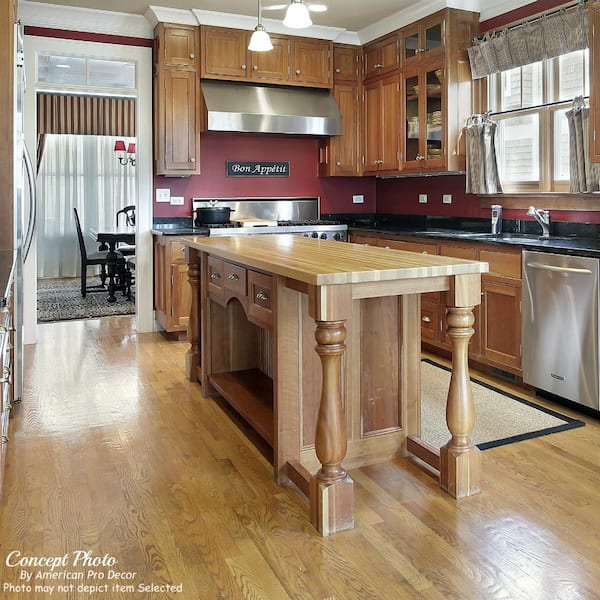Rely on Expert Craftsmanship for Tailored Legs For Kitchen Island Ideas
Rely on Expert Craftsmanship for Tailored Legs For Kitchen Island Ideas
Blog Article
An Overview to Selecting the Perfect Legs For Cooking Area Island for Your Home
Picking the perfect legs for your kitchen area island is a nuanced decision that affects both the capability and aesthetic appeal of this main area. As you think about these components, it ends up being obvious that the best legs can transform not just the look of your kitchen but also its usability for years to come.

Recognizing Kitchen Area Island Legs
When selecting legs for a kitchen area island, it's vital to recognize their visual and practical functions in the general layout. The legs offer as an essential assistance system, guaranteeing security and resilience for the island, which frequently works as a workspace, dining area, or gathering spot. The option of material and building method need to be durable enough to endure everyday use and prospective wear.
In addition to their architectural duties, legs contribute dramatically to the island's visual allure. They can improve the kitchen area's style, whether via conventional, contemporary, or diverse styles. The height and percentage of the legs are likewise important considerations; they should harmonize with the island's counter top elevation while ensuring comfortable seating for those making use of the area.
Moreover, the leg style can affect the general circulation of the cooking area. Open, ventilated leg styles can create a feeling of lightness, while solid, substantial legs may share an extra based and secure visual - Legs For Kitchen Island. Understanding these practical and aesthetic elements will guide house owners in making educated options that match their cooking area's design and enhance its use
Popular Styles and Materials
The selection of legs for a kitchen island incorporates a variety of preferred designs and materials, each offering special features that can enhance both performance and appearances. Amongst the most in-demand styles are contemporary, rustic, and conventional. Contemporary legs often include smooth, minimalist designs that highlight simplicity and clean lines, making them ideal for contemporary kitchen areas. Rustic designs, on the various other hand, accept all-natural aspects and frequently showcase recovered timber or distressed surfaces, including heat and beauty to the area. Conventional legs commonly show elaborate details and workmanship, enhancing timeless cooking area designs.

Elevation and Stability Considerations

The legs of the cooking area island should provide sufficient support, ensuring that the framework can endure everyday usage without moving or tottering. Material choice plays a substantial role in stability; about his steel legs, for instance, often tend to provide higher strength contrasted to wood.
Matching Your Cooking Area Visual
Selecting the right legs for your kitchen area island exceeds functionality; it additionally plays a significant duty in the total aesthetic of the space. When picking legs, think about the layout style of your kitchen area. For a contemporary look, sleek metal or minimalist designs can produce a clean, modern ambiance. On the other hand, standard or rustic cooking areas usually take advantage of wooden legs with elaborate outlining or a troubled surface, enhancing heat and personality.
Legs that complement or comparison with your island's surface and bordering cabinetry can produce aesthetic harmony or striking focal points. Additionally, consider the coating of the legs; matte, shiny, or distinctive surfaces can substantially influence the general feel of the kitchen.
Setup and Maintenance Tips
Mounting kitchen island legs requires cautious focus to information to ensure both security and visual charm. Begin by selecting an appropriate location for your island, ensuring it is level and has sufficient investigate this site area for motion. Make use of a stud finder to situate wall surface studs if you are connecting the legs to a wall or using brackets for added assistance. Mark the placement of the legs properly before exploration.
When safeguarding the legs, utilize top notch screws and, if needed, wood glue for added stamina. For metal legs, make certain that you are making use of suitable anchors and tools to stop damages to your flooring. It is suggested to look for levelness after setup, making modifications as required to stay clear of tottering.
Tidy the legs with a suitable cleaner, staying clear of unpleasant products that might scratch the surface. By adhering to these installation and upkeep pointers, you can make sure that your kitchen area island legs stay both useful and visually attractive.
Final Thought
In final thought, picking the appropriate legs for a kitchen area island requires cautious consideration of height, stability, and visual compatibility. By picking appropriate products and designs that align with the total kitchen layout, performance can be boosted while maintaining visual appeal. Appropriate setup and ongoing upkeep further contribute to the longevity and longevity of the kitchen island. Inevitably, thoughtful leg choice plays an important duty in boosting both the functionality and layout of the kitchen area.
When choosing legs for a kitchen area island, it's crucial to recognize their practical continue reading this and visual roles in the overall design. Open, ventilated leg styles can produce a feeling of lightness, while strong, significant legs may share a much more grounded and steady aesthetic. The legs of the cooking area island ought to supply appropriate support, ensuring that the structure can hold up against daily use without shifting or tottering.Setting up kitchen island legs calls for careful attention to detail to ensure both security and aesthetic allure.In final thought, selecting the ideal legs for a kitchen island demands careful factor to consider of height, stability, and aesthetic compatibility.
Report this page